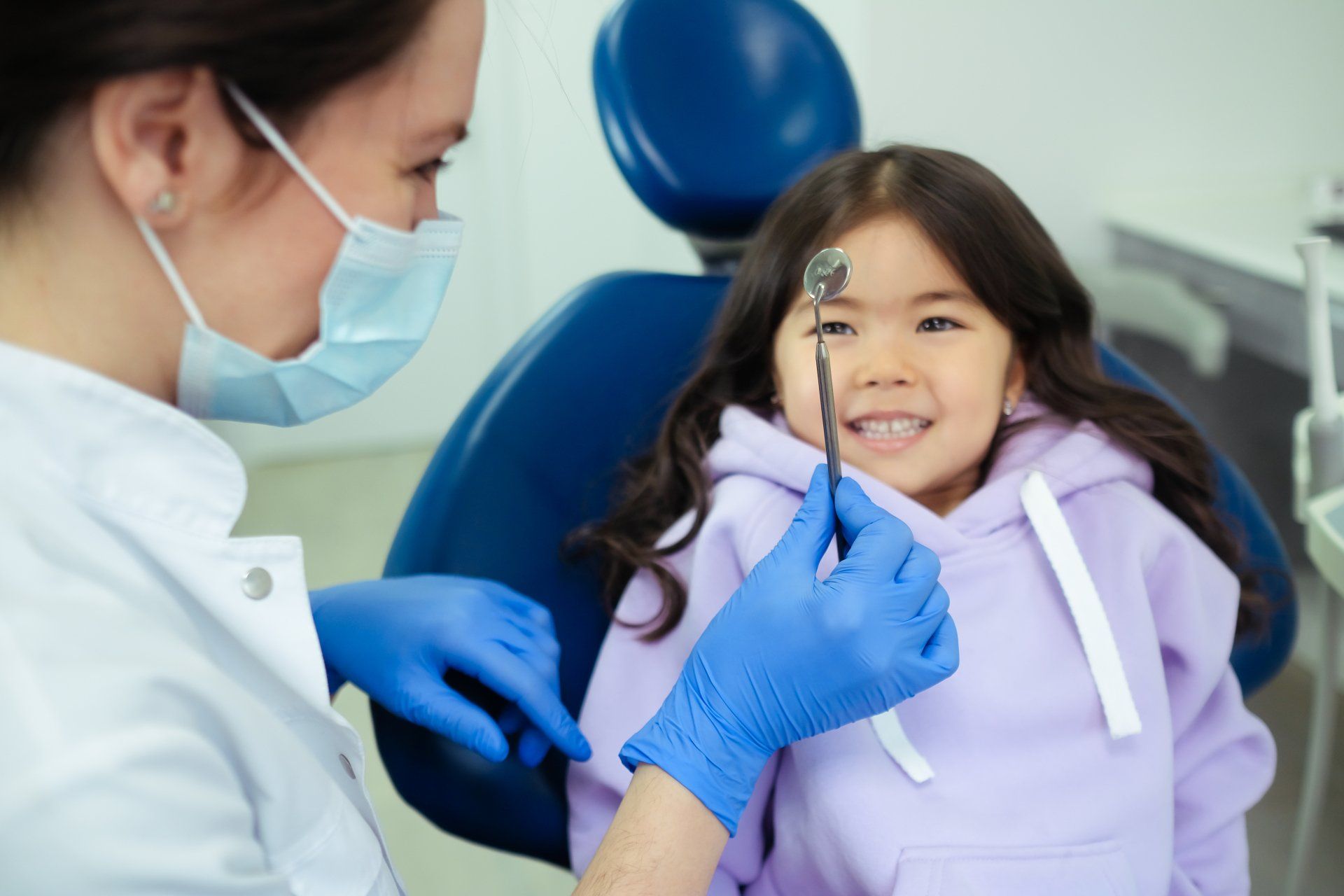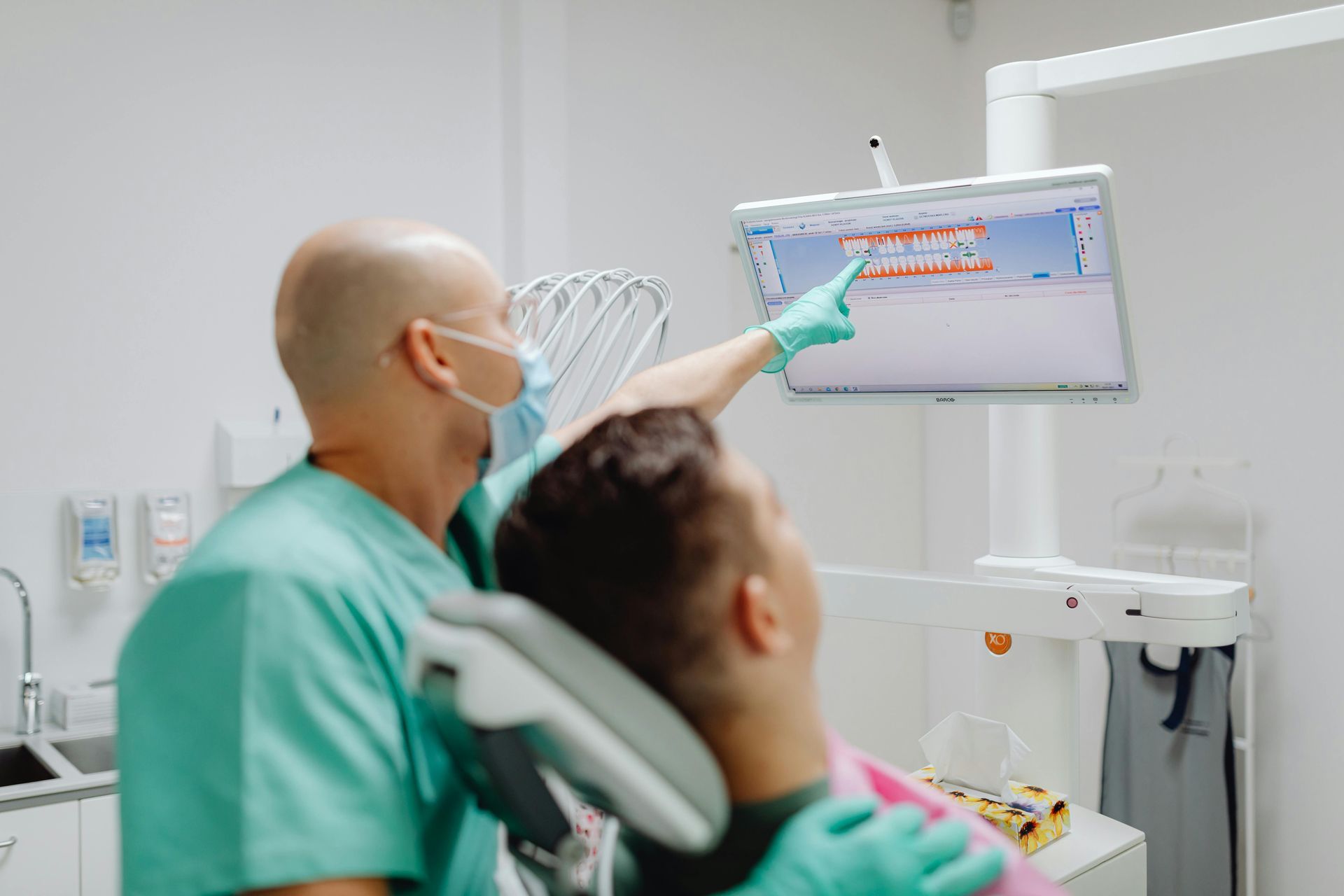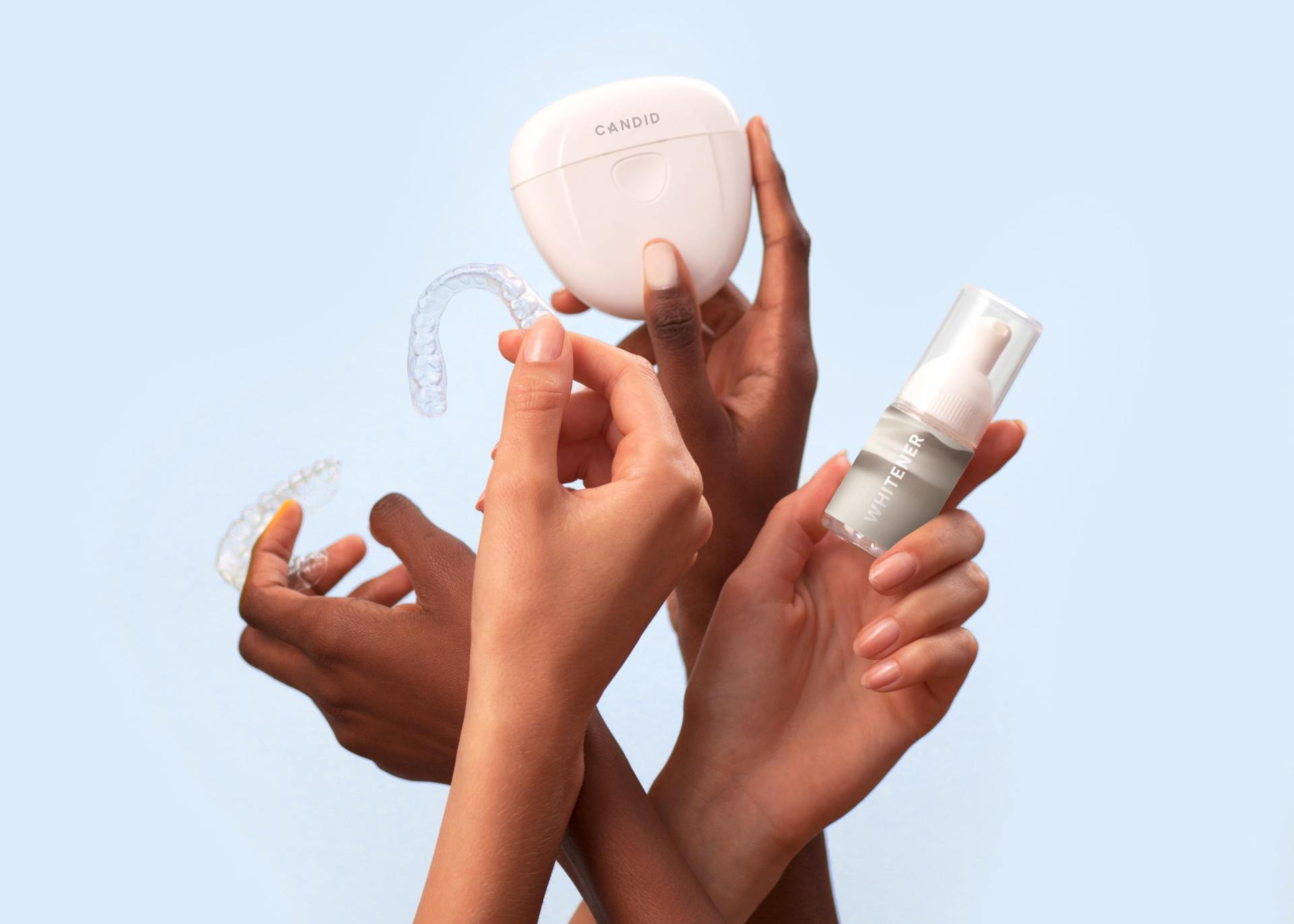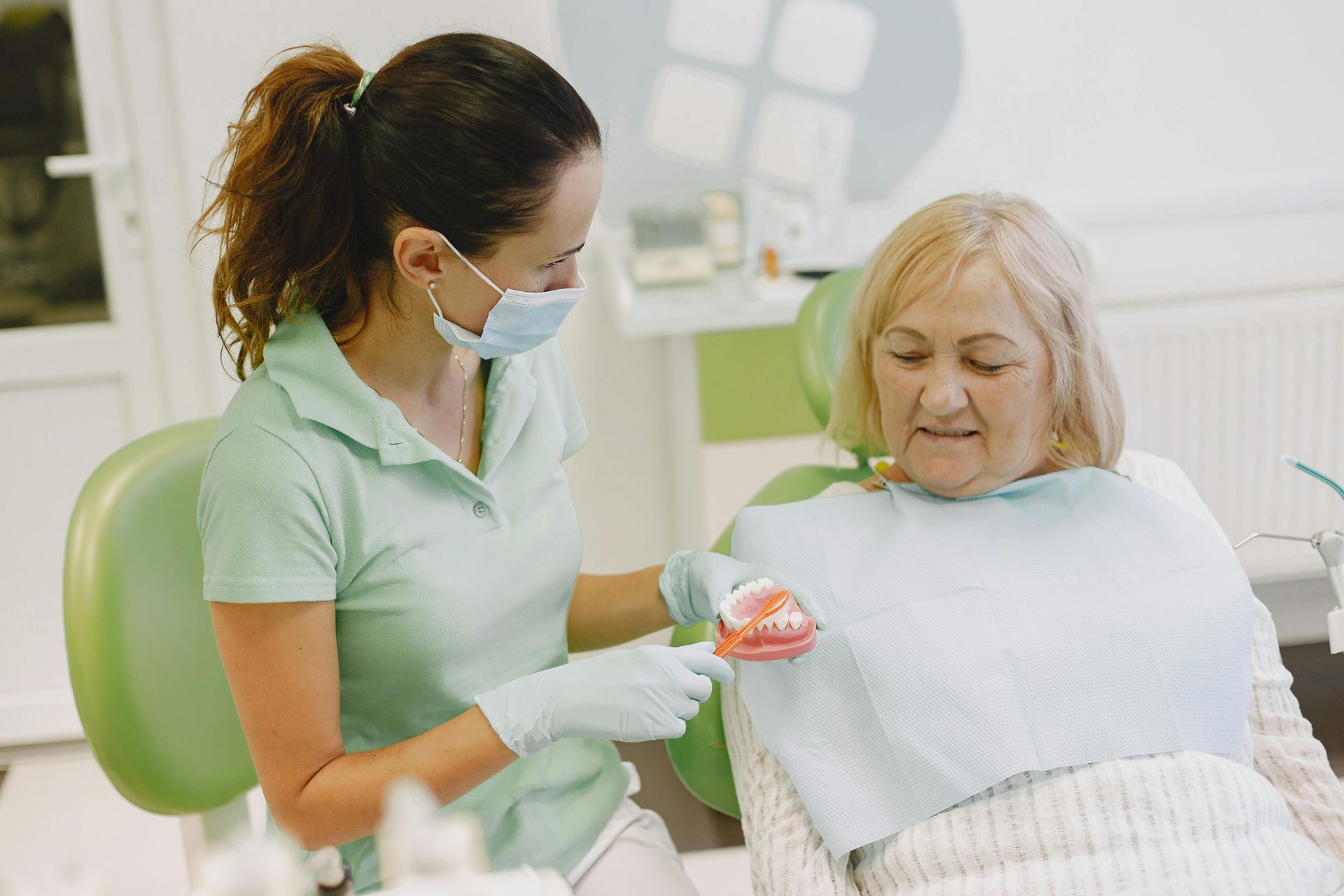Invisalign 101
Is Invisalign Right for Me?
Invisalign 101
We already know that a big smile and straight teeth can positively affect an individual’s confidence and well-being. In fact, around 60% of people are reported to feel that straight teeth make them more confident and happy. So when a treatment called Invisalign can correct any teeth misalignments to deliver that great smile, why wouldn’t you consider it?
Approximately 4 million Canadians and Americans are currently using orthodontic services to improve their oral health and physical appearance. Now more than ever, adults are beginning to opt for corrective treatment and around 1 in 4 brace wearers are over the age of 21.
And that’s in large part due to advancements in modern treatments. With the introduction of the Invisalign process, the embarrassment that sometimes accompanied wearing a traditional brace is lost. With Invisalign’s clear aligners, braces are now virtually invisible.
Invisalign is a fairly recent treatment that uses a computer-generated mold to realign or correct teeth that are growing or are set incorrectly. With Invisalign braces - usually referred to as an aligner - users will be left with a lovely smile, confident in the knowledge that their teeth have been set straight.
It’s an ideal treatment for teenagers who require corrective work. Less fuss than the traditional brace, while also offering more flexibility, Invisalign sets teenagers off on the right path to dental health throughout their adulthood.
In this article, we’ll look at Invisalign pros and cons, who Invisalign’s clear aligners are best suited for, and why they’re the top choice for orthodontists around the globe.
Invisalign - How it Works?
Let’s begin!
As already touched upon, Invisalign is an orthodontic treatment that correctly aligns teeth. But what does that really mean? Well here’s how Invisalign works.
Invisalign uses clear aligners developed from computer-generated images and impressions taken from your mouth by your dentist and their team to change the position of your teeth. While the traditional brace makes use of fixed wires to “pull” the teeth into alignment, Invisalign aligns the teeth by using a series of molds that, across a series of months, force your teeth into their new and improved position.
This is a simple explanation of the general Invisalign process. A more in-depth look at it can be found later in the article.
Invisalign vs Braces: What’s the Difference?
Both Invisalign braces and the older traditional brace are intended to improve the alignment of your teeth to produce a straighter smile and better oral health. While traditional braces have been used by orthodontists and dentists for decades, Invisalign is a newer concept intended to meet the needs of modern people. Invisalign has pros and cons like any other treatment but these are for the patient to decide upon.
Though there are some similarities between the Invisalign and braces, there are probably more differences.
Here are a few:
- Clear vs Visible: While Invisalign aligners are made from see-through BPA-free plastic, which renders them virtually invisible to other people, traditional braces are made from metal wires and elastic bands. This makes them more visible which can cause anxiety for some patients.
- Convenience: Invisalign braces can be removed from the mouth whenever necessary though guidelines suggest patients should wear their trays for 20 - 22 hours per day. In contrast, traditional braces cannot be removed as they are stuck to teeth by wires.
- Treatment Length: The Invisalign process is substantially shorter than the usual treatment period for traditional braces. Because of how Invisalign works, patients only have to wear the trays for 6 to 18 months whereas traditional braces have an average time of 2 years.
- Cost: The baseline cost for Invisalign braces tends to be higher than traditional metal braces, though the upper costs are not significantly different. Ceramic braces are usually more expensive. Speak to one of our dentists for an exact guide to Invisalign cost.
Who is Invisalign Suitable For?
Invisalign is suitable for almost anyone wanting to improve their smile or arrange their teeth in a more orderly fashion.
- Teens: The Invisalign can help correct most misalignments in teenagers’ teeth. Invisalign braces are ideal for teens because they use clear aligners to achieve a glowing smile and improved dental health. This is particularly useful as teenage years are so often fraught with self-consciousness. With shorter treatment times and easier use, Invisalign is an ideal treatment for teenagers who want that winning smile.
- Adults: More and more adults are choosing correctional dental work and taking control over their own health. Invisalign is ideal for adults who want flexibility with their alignment procedure and want to achieve that improved smile without using a highly-visible metal brace.
- Patients needing corrective work on their back teeth may not be suitable for Invisalign. To get a professional opinion on the suitability of yourself or a family member for the Invisalign treatment, simply contact our dental clinic.
The Invisalign Process: A Closer Look
Now, let’s move on to an in-depth look at the Invisalign process. Though the process may change slightly depending on your situation, here we’ll detail the general step-by-step treatment form that most people experience during their care at our Vaughan clinic.
Initial Consultation
At the initial consultation, we’ll invite you into the clinic to have a face-to-face discussion with one of our highly trained, well-experienced dentists. If you’ve already had treatment here then you’ll be seen by the same dentist.
During this visit, we will discuss the Invisalign process, how Invisalign works and the likely Invisalign cost for you. This way you have all the information you need to make an informed decision.
X-rays and Photographs
X rays will most likely be taken during your initial consultation after you’ve decided to go ahead with treatment.
We’ll take a number of x-rays and photographs of your mouth, teeth and face from a variety of angles so that we have a detailed map of your mouth mechanics to base our dental work on.
In certain cases, we’ll also take a lateral cephalometric x-ray. This is a type of x-ray that is popular with and frequently used by dentists because provides elaborate images of the relationship between jaw and cheekbone. This is helpful in planning how we’ll go about aligning your teeth for our intended goal.
From these images we’ll be able to have a good idea of what we’re working from. The final piece in the jigsaw here is to take impressions of the teeth on which your Invisalign aligners (or tray) will be based on.
Preparatory Work
Some patients may need small composite patches applied to each tooth to help Invisalign’s clear aligners to grip onto each tooth and move them. Each patient is different and not all require these patches. The patches are simply made from the same composite material that fillings are made out of and will be removed very easily and without any discomfort at the end of the Invisalign process.
Another piece of preparatory work which varies from patient to patient is the amount of interproximal reduction necessary. This complicated sounding procedure is actually quite straight-forward and is simply used to create a more space between teeth when the patient’s mouth is crowded. To do this, we will use discs to “sand” away some enamel and free up the tooth for improved, less restricted future movement.
First Fitting
You’ll receive the first feel of your Invisalign braces in the same visit as your preparatory work is done. The clear aligners are modelled from your impressions and should feel tight when first put on.
During this stage, your Maple Dental Health dentist will review the fit and may try a few different molds before they are entirely happy. They will likely ask you how the trays feel, whether you can sense any movement or whether they are uncomfortable.
At this point it is entirely normal for your new Invisalign braces to feel strange in the mouth. They should be tight - but not painfully so - as they must be strong enough to begin the realignment process.
If you feel any pain or distress during the first fitting of your Invisalign braces then speak to your dentist. Remember that they may not be particularly comfortable at first but that you will very quickly become used to their feel.
Changes to Your Mouth
When you begin to wear your clear aligners you will feel some strange and peculiar changes going on in your mouth. This is all perfectly normal and part of the process of getting used to Invisalign. Traditional braces have very similar side effects.
The first change will be a certain level of discomfort including aching as your teeth are forced into their new position. This should stop after a few days after every tray change.
Additionally, Invisalign wearers sometimes feel enhanced sensitivity in their teeth. This should subside after a short period too but toothpastes designed specifically for sensitive teeth will help mitigate this small nuisance. Ask your Maple Dental Health dentist for recommendations.
You may also see your speech differ slightly in the first few weeks of wearing your trays. This is simply due to the fact that the clear aligners take up some room within the mouth and your tongue does not have quite the same space to move in. This should disappear within the first couple of weeks.
One sound Invisalign tip is to stick to the 20 - 22 hour wear time for your braces - this will help your tongue get used to its temporary environment more quickly!
Changing Your Invisalign Braces
Your clear Invisalign aligners will be changed every one or two weeks, depending on the decision of the dentist. Occasionally, should teeth not have moved to the required position, this time may be extended.
Each new aligner will have been constructed as a next “phase” in the movement of your teeth, inducing your teeth towards the intended alignment goal. This is how Invisalign works.
You will not need to come to Maple Dental Health each time you change your Invisalign braces but will have regular check-ups throughout your process.
Of course, should you feel any pain or serious discomfort between visits then please contact the clinic to speak to staff.
How to Clean Your Invisalign Braces
Cleaning your Invisalign braces is so easy!
Your trays should be cleaned thoroughly at morning and night and can be done before or after you brush your teeth. This is to remove bacteria that will have built up overnight or during the day. Without sufficient cleaning, the trays may begin to smell.
Cleaning should be done with a toothbrush but without toothpaste.
The trays should also be rinsed every time you take them out during the day. This will help freshen them up to stop smells by removing buildups or bacteria. Additionally, they should be cleaned after every meal to avoid discolouring.
Don River Dental office specializes not only in Family Dentistry but also aesthetic dentistry. At Don River Dental we can provide our clients with services such as Invisalign trays, restorative dentistry. cosmetic dentistry. such as teeth veneers or porcelain veneers. Call us today at 416 901 9292
to speak to one of staff for more information on whats best for you and to find out about the Invisalign cost and to have any other questions regarding the Invisalign process answered, please contact our clinic today. . Look forward to hearing from you shortly.
Maple Dental Health. 2019. "Invisalign 101" Maple Dental Health

Persistent Toothache: When Pain Becomes Unbearable Experiencing a persistent toothache can be an alarming sign that requires immediate dental attention. Tooth pain might seem manageable at first, but when it escalates to severe toothache, it becomes unbearable and signals the need for prompt treatment. Warning Signs to Watch: Severe Pain: Pain that does not subside with over-the-counter pain relievers. Warm or Cold Sensitivity: Heightened sensitivity when eating or drinking hot or cold substances. Bad Taste: A constant bad taste in your mouth may indicate an infection. If you encounter any of these symptoms, it's vital to visit an emergency dentist. Immediate dental care helps maintain oral health and can prevent persistent dental emergencies. Thus, never underestimate the importance of promptly addressing a severe toothache. Extreme Tooth Sensitivity: Sudden or Chronic Extreme tooth sensitivity can be both sudden or chronic, causing discomfort and possibly leading to severe dental issues if not addressed promptly. Understanding the underlying causes is crucial for timely treatment. Here are key facts you should know: Common Symptoms: Sharp Tooth Pain: Often triggered by hot, cold, acidic, or sweet foods and drinks. Persistent Discomfort: Even when not eating or drinking. When to See a Dentist: Severe Pain: Signaling a possible serious dental issue. Toothache: Especially if it is frequent and intense. Loose or Broken Tooth: Emergency dental care may be necessary. Preventive measures, such as maintaining oral health with proper hygiene and avoiding overly acidic foods, can reduce the risk of sensitivity. If you're experiencing persistent sensitivity or any other dental emergencies, seek professional dental attention promptly to explore treatment options. Swollen or Bleeding Gums: A Sign of Trouble Swollen or bleeding gums can be a significant warning sign of gum disease, an oral health issue that requires prompt dental attention. Many might overlook minor bleeding during brushing, but if this symptom persists, it is essential to consult a dentist immediately. Gum disease, in its early stages, is known as gingivitis and can progress to more severe dental issues if left untreated. Here are some alarming symptoms to watch for regarding your gums: Persistent Swelling : Constant inflammation can be a precursor to severe gum disease. Frequent Bleeding : If your gums bleed regularly, even without brushing aggressively, it indicates an underlying issue. Bad Taste or Bad Breath : Persistent bad breath or a bad taste in the mouth signals bacterial accumulation, which may stem from gum disease. Immediate Measures to Take: Practice proper oral hygiene with thorough brushing and flossing. Rinse with warm water to reduce inflammation and bacteria. If you're experiencing these symptoms, it might be time to seek dental care. Early and timely treatment can prevent tooth loss, jaw pain, and more severe dental emergencies. Always prioritize oral health and consult with a dental professional to explore treatment options. Jaw Pain or Clicking: Potential TMJ Concerns Jaw pain or clicking might seem minor, but they can be potential indicators of Temporomandibular Joint (TMJ) concerns. Understanding these warning signs is crucial for maintaining your oral health. Common TMJ Symptoms: Persistent pain in the jaw area Clicking or popping noises when opening or closing the mouth Difficulty or discomfort when chewing A change in the way the upper and lower teeth fit together These symptoms warrant prompt dental attention to prevent further complications. An emergency dentist can assess the severity of these signs, providing timely treatment to relieve discomfort and prevent tooth root damage or additional dental issues. Potential Causes: Teeth Grinding - Often occurring unconsciously during sleep Arthritis - Affecting the temporomandibular joint Jaw Injury - Resulting from an accident or direct impact Maintaining good oral hygiene and regular dental care can help prevent TMJ disorders. If any of these symptoms arise, consider warm water rinses and consult a dental professional to explore treatment options. Timely treatment can mitigate severe pain and ensure better oral health. Always prioritize getting dental attention if you experience these warning signs. Loose, Cracked, or Knocked-Out Teeth: Act Quickly Loose, cracked, or knocked-out teeth are dental emergencies that demand immediate attention. Quick action can mean the difference between saving and losing a tooth. Loose Tooth in Adults: If you notice an adult tooth becoming loose, it’s a significant warning sign of potential gum disease or tooth root issues. Visit an emergency dentist without delay for prompt treatment. Cracked Tooth: A cracked or broken tooth exposes the sensitive tooth root and can lead to severe pain or even infection. Rinse your mouth with warm water, and contact your dentist immediately for dental treatment. Knocked-Out Tooth: Time is critical. If a tooth is knocked out, gently rinse it with warm water, place it back in the socket if possible, or submerge it in milk. Seek emergency dental care within an hour for the best chance of saving the tooth. Here's a quick checklist for handling these situations: Rinse gently with warm water. Recover the tooth or tooth pieces, if applicable. Seek timely treatment from an emergency dentist. These dental issues require swift action to ensure sustained oral health and effective treatment options. Never ignore the warning signs, as timely intervention is key. Dental Abscesses: The Hidden Infection A dental abscess is a serious oral issue that often lurks unnoticed until it becomes a dental emergency. It's a pocket of pus caused by a bacterial infection, typically forming inside the tooth or gums. If left untreated, it can lead to severe tooth pain and other complications. Warning Signs of a Dental Abscess: Severe Toothache: Persistent, throbbing pain that can radiate to the jaw, ear, or neck. Swelling: Noticeable swelling in the gums or face. Bad Taste: A constant foul taste or bad breath due to pus drainage. Fever and Malaise: Feeling generally unwell or feverish. Prompt dental care is crucial. Use warm water to rinse your mouth and reduce discomfort while seeking an emergency dentist for timely treatment. Ignoring warning signs can lead to more severe dental issues and possible tooth loss. Always prioritize oral hygiene to prevent such dental emergencies. Changes in Gum Color, Texture, or Shape: Periodontal Red Flags Changes in gum color, texture, or shape can be significant warning signs of gum disease and require immediate dental attention. Healthy gums should be pink, firm, and fit snugly around your teeth. Any deviations from this norm could indicate underlying dental issues. Possible Warning Signs: Red or Swollen Gums : Can indicate inflammation or infection. Bleeding Gums : Often a sign of gum disease, especially after brushing or flossing. Receding Gums : This could expose your tooth root and lead to sensitivity or even tooth loss. Soft or Tender Gums : May signal a severe stage of gum disease. Prompt treatment can prevent further complications such as tooth decay or even tooth loss. It's crucial to see an emergency dentist if these changes persist. Maintaining optimal oral hygiene and scheduling regular dental care appointments are key to preventing these periodontal issues.Act quickly if you notice any of these changes to ensure your oral health remains in optimal condition. Persistent Bad Breath or Metallic Taste: Unseen Dental Issues Experiencing persistent bad breath or a metallic taste in your mouth can be more than just a social inconvenience; these are often warning signs of underlying dental issues. A metallic taste can indicate issues such as gum disease or tooth decay. When bacteria accumulate due to poor oral hygiene, they can lead to infections, causing a sour or metallic taste. Similarly, chronic bad breath (halitosis) can suggest serious concerns like dental decay, gum disease, or even dry mouth—a condition where insufficient saliva leads to harmful bacteria growth. Check these potential signs: Persistent bad breath: Could be a sign of gum disease or tooth decay. Metallic taste: Might indicate oral infections or poor dental hygiene. Signs of dry mouth: Reduced saliva can lead to bacterial growth. In such cases, immediate dental attention is crucial. An emergency dentist can offer prompt treatment options to mitigate further damage, ensuring your oral health is restored with timely treatment. Make sure to ensure regular dental visits to address these concerns proactively and maintain optimal oral hygiene. Dry Mouth: The Silent Cavity Culprit Dry mouth, also known as xerostomia, might seem like a minor inconvenience, but it can be a silent trigger for more serious dental issues. Saliva plays a crucial role in maintaining oral health by neutralizing acids and cleaning food particles. When saliva production decreases, it increases the risk of tooth decay and gum disease. Warning Signs of Dry Mouth: Persistent thirst Trouble swallowing Bad breath Thick or stringy saliva A constant dry feeling in the mouth If you experience severe toothache or other symptoms like jaw pain or a bad taste that accompanies dry mouth, seek timely dental attention. An emergency dentist can provide prompt treatment to alleviate discomfort and prevent further dental damage. Remember, maintaining good oral hygiene and staying hydrated are essential steps in combating this silent cavity culprit. Seek dental advice if persistent issues arise, as timely treatment is crucial for minimizing long-term complications. Conclusion: Protecting Your Oral Health Through Awareness It is crucial to stay informed about the warning signs that you need to see a dentist immediately. Recognizing these signs can mean the difference between quick recovery and complicated dental issues requiring extensive treatment. Common Warning Signs: Severe Toothache Persistent Jaw Pain Bad Breath or Bad Taste Loose or Knocked-Out Tooth Severe pain from a Broken Tooth Dry Mouth Ignoring these symptoms can escalate into serious problems like tooth decay or gum disease, which might eventually lead to tooth loss or require emergency dental care. Ensuring prompt treatment for these symptoms can prevent long-term damage and more invasive dental procedures. Simple Tips for Oral Health: Maintain good oral hygiene by brushing and flossing daily. Rinse with warm water to alleviate discomfort. Schedule regular dental check-ups. Awareness is your first line of defense in protecting your oral health. By staying vigilant and seeking timely treatment, you safeguard not only your teeth but also your overall well-being. Prioritize dental care to ensure a healthy, confident smile. At Don River Dental we give you the best tips . If you are experiencing any symptoms or pain please feel free to call us at (416) 901 - 9292 and someone from our team will be happy to answer any questions and schedule an appointment as soon as possible. We offer safe soothing dentistry in North York.











